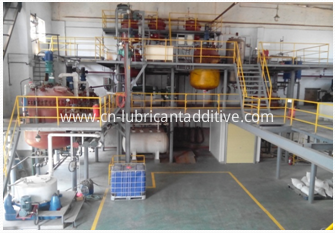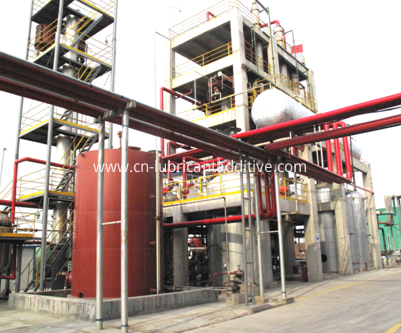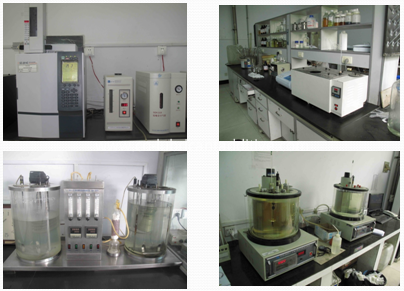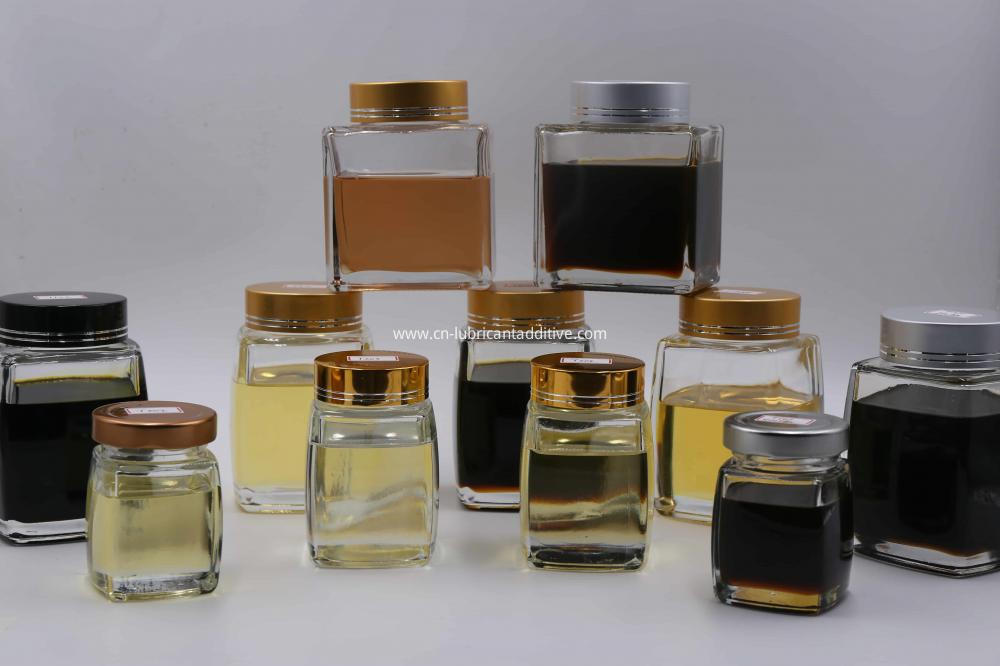
Privacy statement: Your privacy is very important to Us. Our company promises not to disclose your personal information to any external company with out your explicit permission.
2019-09-30
Vehicle emissions legislation (e.g., in the United States, Europe, and Japan) now exists to control and substantially reduce the levels of particulates, hydrocarbons, carbon monoxide, and oxides of nitrogen in the engine exhaust. The engine manufacturers have met these requirements by a variety of design changes that impact the composition of oils and fuels in the following ways:

• The introduction of catalytic converters to oxidize the hydrocarbon and carbon monoxide components to carbon dioxide and water, and reduce the nitric oxide (NO) to nitrogen, has been very successful in reducing emissions. When they operate at their normal operating temperature and optimum level of effciency, they are almost 100% effcient and most of the remaining emissions occur in the time before the catalyst reaches [light-off" temperature. Many studies into reducing this period to achieve yet lower emissions have been conducted. Although much success has been achieved, further progress may be hindered by the formation of a deactivating flm on the catalyst surface by the phosphorus from the ZDDP antioxidant and AW/ Ep Additive . As a consequence, there is pressure to reduce the phosphorus content of engine oils to minimize catalyst fouling. Currently, oil specifcations such as ILSAC GF-4 and ACEA Cx limit the phosphorus content of both diesel and gasoline engine oils to 0.05–0.09% with the actual level being linked to the amount of catalyst used and the expected service interval. Further reductions below 0.05% are being considered, but there is a concern that such a low level could adversely affect the durability of certain engine parts, for example, the valve train and timing chain, as reducing the ZDDP content also reduces the wear protection. However, a recent study suggests that the behavior of phosphorus compounds in wear and catalyst tests varies according to the way in which phosphorus is incorporated into the molecule. Further work reports that it is possible to achieve improvements in catalyst protection (and fuel economy) by reducing the ZDDP content and then adding a metal-free phosphorus-containing Aw Additive .

• In an attempt to increase fuel economy, the so-called fuel-effcient lubricants are being developed. These are usually lower-viscosity products (since energy losses decrease with viscosity), sometimes complemented by the use of friction modifers. However, low-viscosity oils may cause increased wear of some engine components, and the necessity for improving the wear protection is being studied. The ILSAC GF-5 specifcation, for example, will necessitate the use of some form of friction modifer to guarantee the required level of economy. Currently, molybdenum compounds or long-chain esters are under evaluation, but other approaches (e.g., the use of functionalized viscosity modifers) are also being studied as the ability of these additives to deliver reduced friction over long periods is uncertain (Mainwaring, R., Shell Global Solutions, U.K.). ZDDP is linked to increased friction and therefore reduced ZDDP levels may also be required.
• To reduce the particulate (soot) levels in exhaust gas, the diesel engines in many passenger cars and trucks need to use particulate flters. These flters can also remove the ash-containing residue produced from metallic fuel and lubricant additives, and if they are not occasionally cleaned, they will block causing a deterioration in engine performance. The engine builders, however, are trying to preserve or even extend service intervals and consequently are interested in reducing the ash content of the oil. Although ZDDP is not the only source of metals in the oil, a reduction in zinc content will follow automatically from any reduction in the phosphorus content (as long as ZDDP remains in formulations) and will therefore help to reduce engine oil ash content (Mainwaring, R., Shell Global Solutions, U.K.).

• One of the techniques used to remove the soot from the particulate flters (and thereby maintain an acceptable engine back pressure) has been to oxidize the deposited carbonaceous material by nitrogen dioxide (NO2). This is obtained from the exhaust gas by catalytically oxidizing the NO component. The oxidation of the soot to carbon dioxide effectively removes carbonaceous flter deposits, and the NO2 is such a powerful oxidant that it enables the process to be carried out at a relatively low temperature (∼250°C). Unfortunately, the catalyst used to oxidize the NO preferentially oxidizes any SO2 in the exhaust, thereby reducing the effciency of the NO conversion. Additionally, the sulfur trioxide (SO3) formed passes through the trap in the gas phase and is converted there into sulfuric acid by the water in the exhaust. The sulfuric acid (monitored as [sulfates") contributes, as droplets, to the overall level of particulate emissions and is clearly undesirable if the exhaust gas is inhaled. Any reduction in sulfur content by lowering ZDDP levels in engine oils also reduces the phosphorus content arising from this additive. Supplemental phosphorus may therefore be needed.
• Increased emphasis on fuel economy led some manufacturers to introduce direct injection stratifed charge gasoline engines. Conventional catalysts cannot remove oxides of nitrogen (NOx) in these [lean-burn" engines, and, as a result, NOx storage catalysts have been developed in which the oxides are stored as nitrates by reaction with barium sulfate contained in the catalyst coating. When the barium-containing sites become saturated, the engine switches to stoichiometric or slightly rich operation at which temperature the nitrates break down and release the NOx, thus promoting its reduction through the conventional route of reaction with hydrocarbons and carbon monoxide. Unfortunately, barium sites react preferentially with any sulfur oxides present, reducing their ability to [store" NOx. As a consequence, there is again pressure to reduce the fuel sulfur content. However, these levels are already being lowered (see [Fuels" below), and at such levels, the engine oil begins to be a signifcantAshless Phosphorus-Containing Lubricating Oil Additives contributor to exhaust [sulfur" content.A debate has therefore arisen regarding the future level of lubricant sulfur, and diesel engine manufacturers have already expressed interest in lubricants with a sulfur level as low as 0.2%- considerably below the current value of ∼1% (Mainwaring, R. Shell Global Solutions, Private Communication, January 2008).

In 1999, the European Union (EU) issued emission requirements for heavy-duty diesels that anticipated signifcant reductions in NOx, CO, unburnt hydrocarbons, and particulates over the period from 2001 to 2008. The greatest challenge was to lower NOx while at the same time reducing particulates as measures to correct the former normally resulted in an increase in the latter. In addition, in reducing NOx, the effciency of the diesel engine would be impaired, and the result would be an increase in fuel consumption and CO2 emissions. However, a technique called selective catalytic reduction (SCR) has now been developed and adopted by several engine manufacturers in the EU. This involves injecting an aqueous solution of urea (CO(NH2)2) into the exhaust stream where it degrades to carbon dioxide and ammonia (NH3). The NH 3 then reduces the NOx to nitrogen (N2) and water on a tungsten/vanadium catalyst. It is obviously important to avoid NH3 being released into the atmosphere, and another catalyst is required to oxidize any residual NH3 while avoiding oxidation of the nitrogen.
To date, SCR (low NOx but high particulates) has generally been favored over diesel particulate flters (high NOx but low particulates) for reducing emissions by many EU manufacturers. It allows engines to operate more effciently-indeed suffciently so as to more effciently and more than offsets the cost of the urea. However, although it is an effective technique, there are concerns about its size, weight, guaranteed availability throughout Europe, and its effcacy at the lower temperatures encountered in the exhaust of light-duty applications. These problems have so far prevented its application to passenger cars. The effects on pollution if urea is not used in a system designed for its use and how the solution would be made available to the ordinary motorist are currently the subject of further investigation and debate.

As a professional supplier of Lubricant Additive Component and Additive Package , we supply Ashless Dispersant , High Temperature Antioxidant, Rust Preventative Anti-rust Additive, Corrosion Inhibitor Zddp, Pour Point Depressant , etc., along with Additive Package of Hydraulic Oil Additive Package, Gear Oil Additive Package, 4T Motorcycle Oil Additive Package, Pcmo Gasoline Engine Oil Additive Package, HDEO Diesel Engine Oil Additive , etc.
Free feel to contact Email: sales@cn-lubricantadditive.com and Tel/WhatsApp: +86-13783582233 with any interest.
Share to:
Send Inquiry

Mr. James
Tel:0086-371-58651986
Fax:
Mobile Phone:+8613783582233
Email:sales@cn-lubricantadditive.com
Address:No.11 Changchun Road, High-Tech Zone, Zhengzhou, Henan
Related Products List
Mobile Site


Privacy statement: Your privacy is very important to Us. Our company promises not to disclose your personal information to any external company with out your explicit permission.

Fill in more information so that we can get in touch with you faster
Privacy statement: Your privacy is very important to Us. Our company promises not to disclose your personal information to any external company with out your explicit permission.